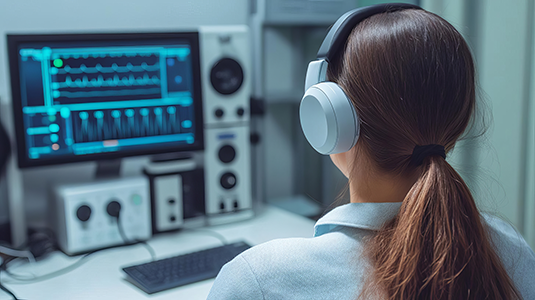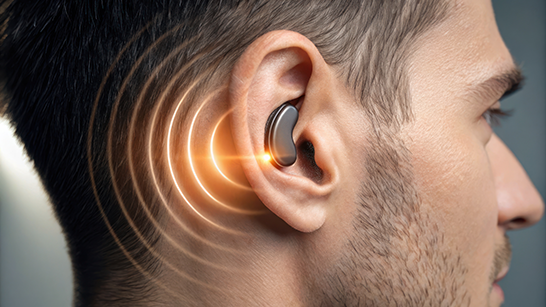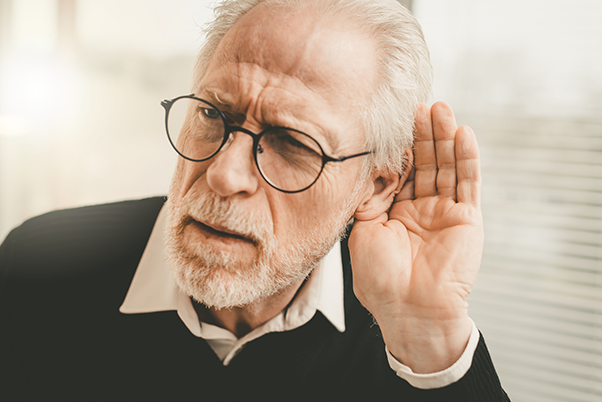Curious about hearing tests? Discover what is speech audiometry and how it helps identify hearing loss. Read more in our latest blog post!

Speech audiometry is a key diagnostic method used in audiology to assess how well a person hears and understands spoken language. Unlike pure tone audiometry, which tests sensitivity to isolated tones, speech audiometry provides functional insights into real-world communication ability.
How does a speech audiometry test work?
A speech audiometry test includes two core components: Speech Reception Threshold (SRT) and Word Recognition Score (WRS).
| Component | Purpose | Measurement | Example Stimuli |
|---|---|---|---|
| SRT | Determines softest level at which 50% of words are understood | Measured in decibels HL | Familiar two-syllable words |
| WRS | Assesses ability to recognize and repeat words at comfortable volume | Expressed as percentage | Single-syllable words |
SRT reveals the speech detection threshold, while WRS indicates speech discrimination and speech intelligibility. These measures form the foundation of a complete hearing evaluation.
What tools are used in speech audiometry?
Audiologists use calibrated audiometers, headphones, and speech testing equipment inside sound-treated booths. These tools deliver controlled speech stimuli in quiet or noisy settings, following standardized speech testing protocols used in clinical audiology.
What types of hearing loss can it detect?
Speech audiometry can help classify hearing loss into:
- Sensorineural hearing loss (e.g., noise damage, aging)
- Conductive hearing loss (e.g., ear infections, blockages)
- Mixed hearing loss (combination of sensorineural and conductive)
Discrepancies between speech audiometry results and pure tone audiometry may indicate central auditory processing disorders or retrocochlear pathology.
How does it simulate real-world hearing?
Speech in noise testing evaluates how well a person understands speech amid background sounds—replicating real-life scenarios like conversations in restaurants or public spaces. These tests assess auditory perception, speech comprehension, and functional hearing ability.
How is speech audiometry adapted for children?
In pediatric audiometry, speech tests use picture-pointing or play-based tasks. These adaptations maintain test reliability while engaging younger children. For adults, the standard speech testing protocol is followed, with additional evaluations based on hearing screening results and reported symptoms.
When is speech audiometry necessary?
Speech audiometry is essential when:
- Confirming or challenging pure tone audiometry findings
- Evaluating candidacy for ENT testing
- Planning hearing aid fittings
- Tracking hearing loss over time
- Diagnosing auditory disorders
It supports diagnostic hearing tests by identifying speech understanding issues even when tone thresholds appear normal.
What do the results mean?
Results are interpreted using both audiograms and speech testing scores. A high SRT suggests difficulty detecting speech, while a low WRS may indicate problems with speech clarity, despite adequate hearing sensitivity. Together, these findings guide hearing aid evaluation, treatment planning, and patient counseling.
Where is speech audiometry performed?
Speech audiometry is performed in audiology clinics, hospitals, or ENT (ear, nose, and throat) specialist centers. These facilities have sound-treated booths and specialized equipment operated by trained audiologists or hearing care professionals. Testing may also be available in:
- Otolaryngology departments within hospitals
- Hearing aid centers offering diagnostic services
- Pediatric audiology clinics for child-specific testing
- Mobile hearing units for remote or community-based assessments
Each setting ensures controlled environments and calibrated tools for accurate hearing evaluation and speech testing.






